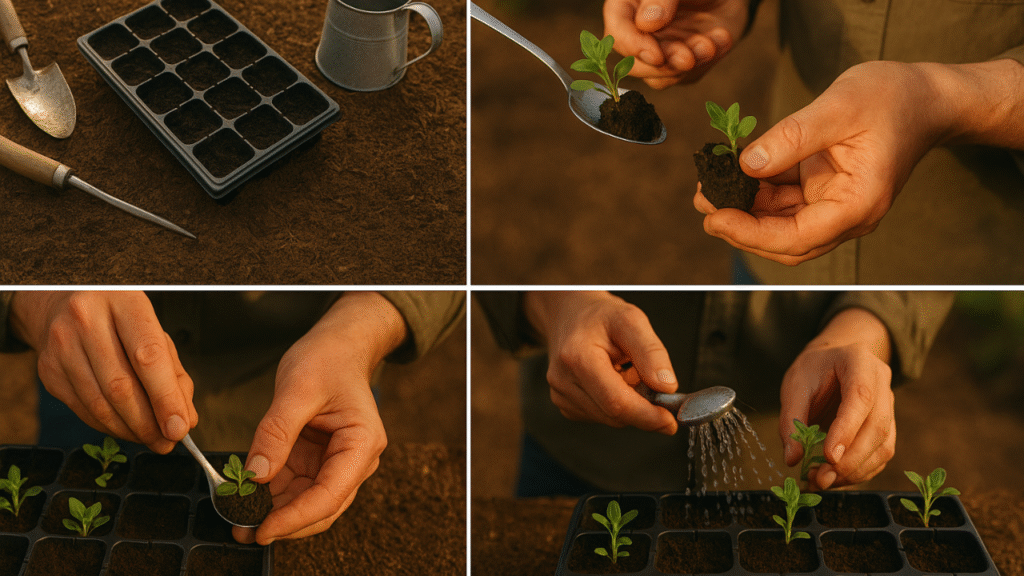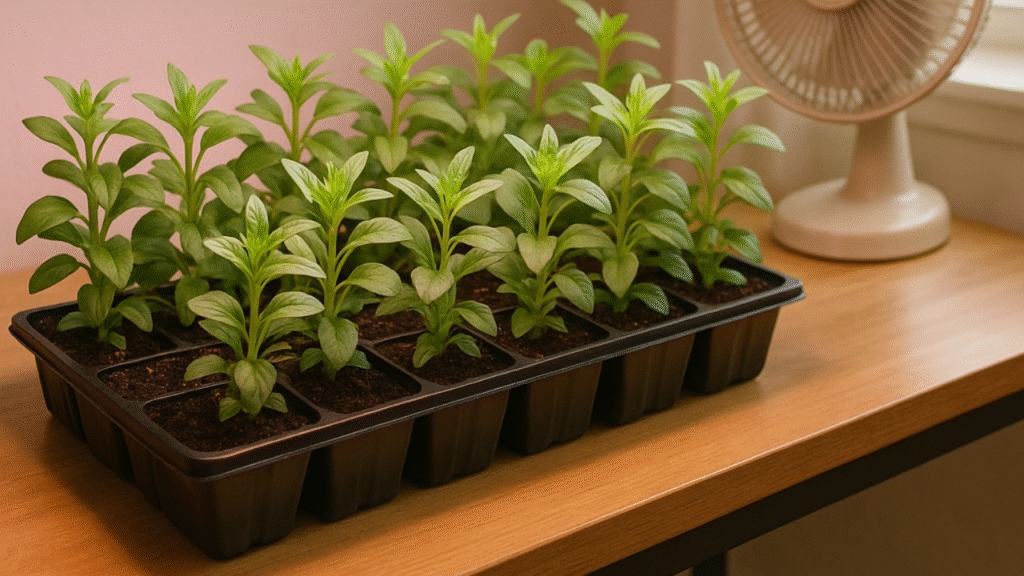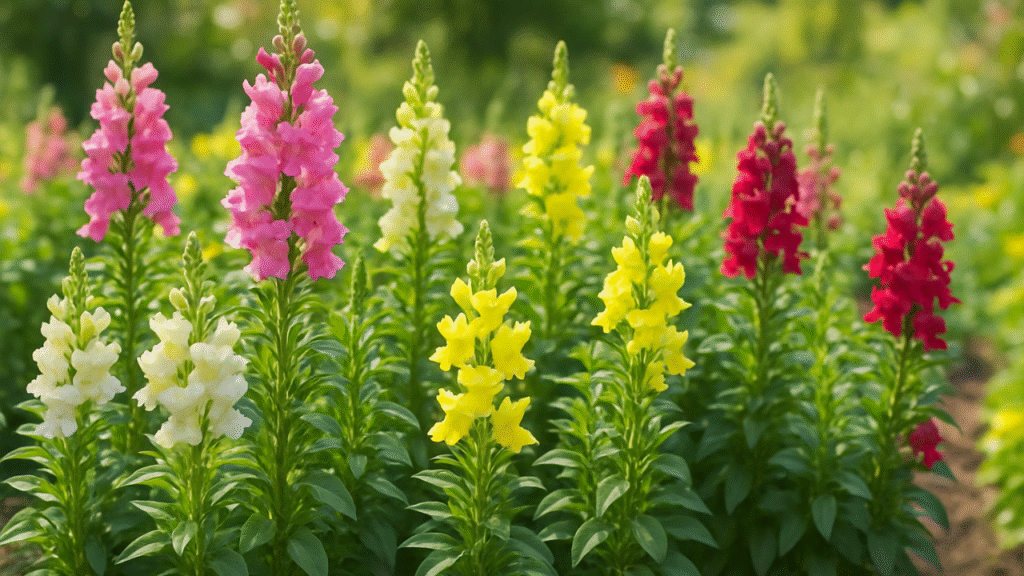
Every time I see a tray of tiny snapdragon seedlings stretching their baby leaves toward the light, I’m filled with a quiet joy—and a hint of nervous excitement. I remember my first year growing them, afraid to even touch the delicate stems, worried I’d break something or do it too soon. But let me tell you this: pricking out snapdragon seedlings isn’t something to fear—it’s a small act of care that sets the stage for beautiful, flourishing blooms.
Over the years, I’ve found that this step can make the difference between weak, leggy plants and vigorous, flower-packed stems perfect for the vase. It’s like giving your seedlings room to breathe, stretch, and grow strong. And once you learn the rhythm of when and how to do it, it becomes second nature. Let’s walk through it together—hand in hand, trowel in hand—with warmth, patience, and a little dirt under our nails.
Why Pricking Out Matters for Snapdragon Success
Benefits of Early Transplanting for Stronger Roots
Snapdragons are like shy little guests at a garden party—timid at first, but full of promise. In their early seedling stage, they often crowd together in a single tray, their roots tangled in a tight space. Pricking out snapdragon seedlings at the right moment helps encourage deeper, more established root systems.
By gently moving each seedling into its own pot or cell, you’re allowing the roots to expand freely without competition. This early transplanting gives the plant a head start—it becomes sturdier, better anchored, and more prepared to take off once it’s moved to the garden bed. I’ve found my snapdragons to be less prone to transplant shock when I give them this breathing room early on.
How Pricking Out Reduces Competition and Disease Risk
When seedlings are left too long in their initial trays, they begin to fight for light, space, and nutrients. This crowding not only stunts growth but also invites damping-off disease and fungal problems that can wipe out your precious starts overnight.
By pricking out snapdragon seedlings while they’re still young, you’re actively reducing that stress and improving airflow between plants. It’s a proactive move that protects your seedlings from the heartache of common diseases—something I learned the hard way during one wet spring season. Ever since, I’ve made early spacing (moving them before roots get tangled) a non-negotiable part of my seed-starting routine.
When Is the Right Time to Prick Out Snapdragon Seedlings?
Key Signs Your Seedlings Are Ready
The million-dollar question: When should you prick out snapdragon seedlings? Timing is everything. Wait too long, and the roots get too entangled. Go too early, and the seedlings may not be strong enough to handle the move.
Here’s what I look for every season:
- Seedlings have at least one set of true leaves (these look different from the first “seed” leaves).
- Stems are sturdy enough to lift without flopping.
- They’re starting to outgrow the space, with leaves touching their neighbors.
- If you gently tap the tray and the soil moves as one dense mat, that’s a telltale sign—it’s time.
How Temperature and Light Affect Timing
Snapdragons love cool conditions, but their growth will still be affected by your indoor light and room temperature setup. If you’re growing under LED grow lights (like I do in my mudroom), seedlings may be ready to prick out a little sooner, thanks to consistent light and warmth.
Watch for these factors:
- Cooler temps (60–65°F) may slow leaf development, so give them a few extra days.
- Low light will cause leggy seedlings—don’t wait, prick them out early to correct spacing.
- High humidity can encourage fungal growth—another reason to separate crowded seedlings quickly.
Trust your eyes and hands. Once you’ve seen a healthy tray ready to prick, you’ll know the signs instinctively.
Essential Tools & Supplies for Pricking Out Snapdragons
Choosing the Right Seedling Trays and Pots
Back in my first year, I reused yogurt containers (with holes poked in the bottom) because that’s all I had—and guess what? It worked! But over time, I’ve fallen in love with modular seed trays that allow for better air pruning and easier transplanting.
Look for:
- 2-inch cell trays with individual compartments
- 3-inch biodegradable pots for easy garden transplanting
- Labels and a waterproof marker to track your varieties (especially if you grow Rainbow Mix!)
Keep it simple, but choose quality. A sturdy tray can last you years—and your seedlings will thank you for the space.
Best Soil Mix for Transplanted Snapdragons
Snapdragons aren’t too picky, but I like to give them the best start possible after pricking out. Here’s my go-to soil mix:
- Light, well-draining seed-starting mix
- A bit of perlite or vermiculite for added airflow
- Optional: worm castings or gentle organic fertilizer to boost early nutrition
Avoid heavy garden soil or mixes with large chunks. Your seedlings are still delicate and need a fine-textured home to spread their roots easily.
Step-by-Step Guide to Pricking Out Snapdragon Seedlings

Preparing Your Workspace
Before you even touch the seedlings, take a moment to set up your workspace. Trust me, trying to do this in a rush with nowhere to set down tools or trays never ends well (I’ve had more than one spilled tray over the years!).
Here’s what to gather:
- Clean pots or cell trays
- Pre-moistened potting mix
- A small spoon, dibber, or even a popsicle stick
- Watering can with a fine rose
- A tray to catch spills
Wipe down surfaces, wash your hands, and breathe—you’re about to give your seedlings a new home.
Caring for Snapdragons After Pricking Out
Light, Water, and Humidity Requirements

Once your seedlings are tucked into their new homes, they’ll need the right environment to settle in and thrive. Think of this as their recovery room—a calm, cozy space where they can build strength.
- Light: Place them under bright grow lights for 14–16 hours a day or in a south-facing window if natural light is strong. Without enough light, they’ll stretch and weaken.
- Water: Keep the soil evenly moist, not soaked. I like to bottom-water by setting trays in a shallow pan for a few minutes. This encourages roots to grow downward.
- Humidity: If your home is dry, cover trays loosely with a humidity dome or clear lid—but remove it as soon as you see condensation or mold. Good airflow is key.
I always keep a gentle fan running nearby to mimic a breeze and toughen up those tiny stems.
How to Harden Off Seedlings for Outdoor Planting
One of the most important steps (and often overlooked by eager gardeners!) is hardening off—slowly acclimating your snapdragons to the outdoors.
Start about 10 days before planting out:
- Place trays outside in dappled shade for 2–3 hours.
- Gradually increase exposure to full sun and outdoor temps over the next week.
- Bring them in at night if it’s still below 45°F.
By day 7–10, they should be ready to handle wind, sun, and cool nights in the garden.
Skipping this step can shock your plants. I learned this the hard way my second year when I lost a whole tray to sunburn and wind damage. Don’t rush—it’s worth the wait.
Common Mistakes When Pricking Out & How to Avoid Them
Damaging Seedling Roots
Snapdragon roots are fine and delicate early on, so the biggest mistake I see is pulling seedlings by the stem. Instead:
- Use a dibber, spoon, or stick to gently lift from underneath.
- Hold by the leaves, never the stem—it’s safer and causes less damage.
- If roots are tangled, soak the tray for a few minutes before separating them.
Take your time. Gentle hands make all the difference.
Overcrowding in New Containers
It’s tempting to pop two or three seedlings into one cell to save space—but trust me, it’s not worth it. Overcrowding leads to weak stems, poor airflow, and competition for nutrients. Give each plant its own pot or module, and they’ll reward you with strength and beauty.
Overwatering or Underwatering
Newly pricked-out seedlings are sensitive to moisture changes. Too much water leads to root rot and damping-off; too little causes wilting or stunted growth.
Flora’s Tip: Stick your finger into the soil—if it feels damp ½ inch down, hold off watering. If dry, water gently until moist. Listen to your plants—they’ll show you what they need.
Tips for Growing Strong, Bloom-Ready Snapdragon Seedlings
Fertilizing After Pricking Out
A week or so after transplanting, once your seedlings have settled, begin feeding with a diluted organic liquid fertilizer (like fish emulsion or seaweed extract). Start at half-strength every 10–14 days. This encourages leafy growth without burning tender roots.
Don’t overdo it—too much nitrogen will make plants lush but floppy. Aim for balanced, slow growth.
Preventing Damping-Off and Other Seedling Diseases
Damping-off is the heartbreak of seed-starting. It sneaks in quietly and topples your hard work overnight. To prevent it:
- Always use clean pots and tools.
- Avoid overwatering.
- Provide good airflow with a fan or open window.
- Sprinkle a light dusting of cinnamon (a natural antifungal) on the soil surface.
Since adding this habit to my routine, I haven’t lost a single tray to damping-off. Small steps = big rewards.
Conclusion: Enjoy Healthy Snapdragons All Season Long

Learning the art of pricking out snapdragon seedlings may seem delicate at first, but it’s a loving act of care—one that transforms tiny green starts into strong, confident plants ready to burst into bloom. With time, you’ll trust your instincts, feel the rhythm of seedling life, and fall in love with every part of the process.
There’s something deeply satisfying about watching a snapdragon you nurtured from seed bloom proudly in your garden or vase. You gave it room. You gave it light. You gave it a chance—and it gave you beauty in return.
So roll up your sleeves, trust your instincts—and let the snapdragons thrive.
Frequently Asked Questions About Pricking Out Snapdragons
Can I Direct Sow Instead of Pricking Out?
While you can direct sow snapdragons in the garden, I don’t recommend it—especially for early spring blooms. Snapdragons need a long head start and cool conditions to grow strong. Starting indoors and pricking out gives you better control, earlier blooms, and healthier plants.
What If My Seedlings Become Leggy?
Leggy seedlings usually mean they’re reaching for light. Move them closer to your grow lights or increase their exposure. When pricking out, bury them a bit deeper in the new soil to help stabilize weak stems.
How Long Before I Can Plant Snapdragons Outside?
Snapdragons are cool-weather lovers. You can plant them out 2–3 weeks before your last expected frost, as long as you’ve hardened them off properly. In most U.S. zones, that’s March to April—check your local frost dates and watch the weather!

